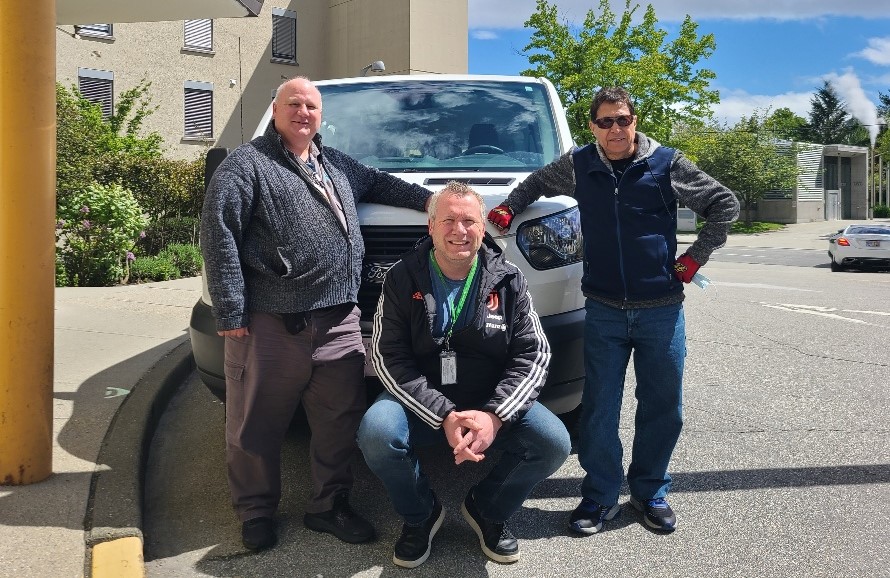Filter content below by Health Organization
Health Organization
Sustainable Transportation Options for Health-care Staff
To continue to build healthy and resilient communities, health organization departments and provincial partners can engage with staff, patients and visitors to increase access to and use of sustainable transportation modes when commuting and travelling between health-care facilities and within the community.
Sustainable transportation refers to modes of transportation that have a reduced negative environmental impact, compared to single-occupancy vehicles that consume gas or diesel. Sustainable modes may include public transit, carpooling, electric vehicles, or active modes of transportation.
Active transportation refers to human-powered transportation modes that reduce the risk of disease, the effects of psychological stress and the negative physical impact of a sedentary lifestyle. This includes walking/rolling, cycling, running, and the use of human-powered or hybrid mobility aids such as wheelchairs, scooters and e-bikes.

Goals and impact
- Ensure a health-care system in which employees, patients and visitors commute and travel in a manner that reduces GHG-related pollutants, minimizes the need for onsite parking and increases overall health and wellness.
- Reduce staff dependence on single occupancy vehicles for commuting.
- Increase active modes of transportation in line with B.C.’s Move. Commute. Connect strategy to increase active transportation throughout the province, and align with the CleanBC plan to reduce GHG emissions.
- Transition to low-carbon communities for the health of communities and the environment.
- Advance initiatives that support active and clean transportation, including:
- Carpooling/ridesharing
- Electric vehicle charging stations
- Inter-hospital shuttle services
- Staff transit incentive programs
- Secure bicycle storage and showering facilities
- Active transportation events and education
- Direct active and clean transportation support and resources with consideration for accessibility and mobility requirements of staff, patients and visitors.
Increase the proportion of self-reported commutes staff make by cycling, walking and rolling (% commutes, annual average)
10%
2025
15%
2030
Increase the proportion of self-reported commutes staff make by hybrid and electric vehicles, public transit, carshare, carpool and hospital shuttle (% commutes, annual average)
25%
2025
30%
2030
Increase the proportion of self-reported commutes staff make by cycling, walking and rolling (% commutes, annual average)
30%
2025
35%
2030
Increase the proportion of self-reported commutes staff make by hybrid and electric vehicles, public transit, carshare, carpool and hospital shuttle (% commutes, annual average)
40%
2025
50%
2030
Increase the proportion of self-reported commutes staff make by cycling, walking and rolling (% commutes, annual average)
25%
2025
30%
2030
Increase the proportion of self-reported commutes staff make by hybrid and electric vehicles, public transit, carshare, carpool and hospital shuttle (% commutes, annual average)
35%
2025
45%
2030
Increase the proportion of self-reported commutes staff make by cycling, walking and rolling (% commutes, annual average)
25%
2025
30%
2030
Increase the proportion of self-reported commutes staff make by hybrid and electric vehicles, public transit, carshare, carpool and hospital shuttle (% commutes, annual average)
40%
2025
45%
2030
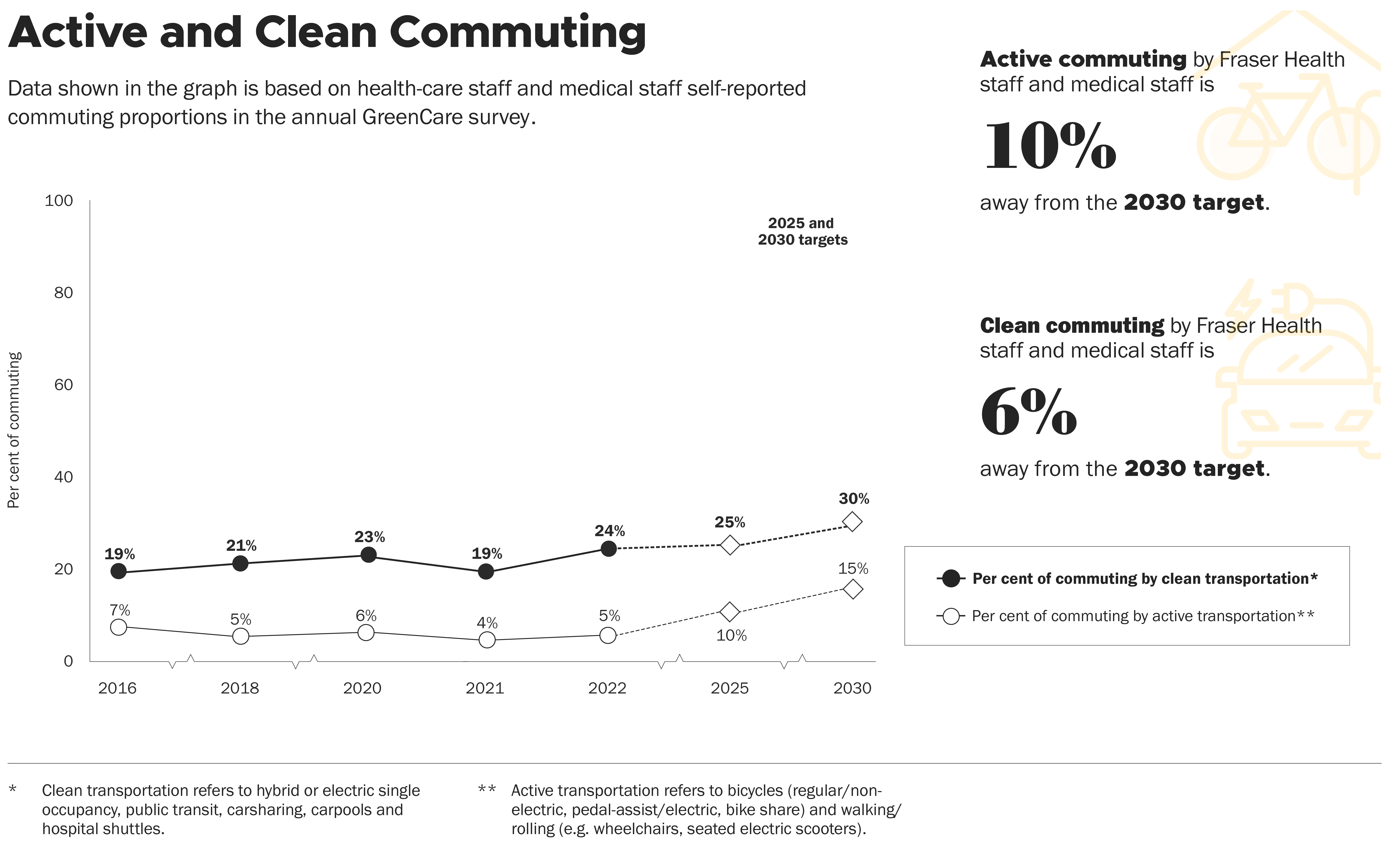
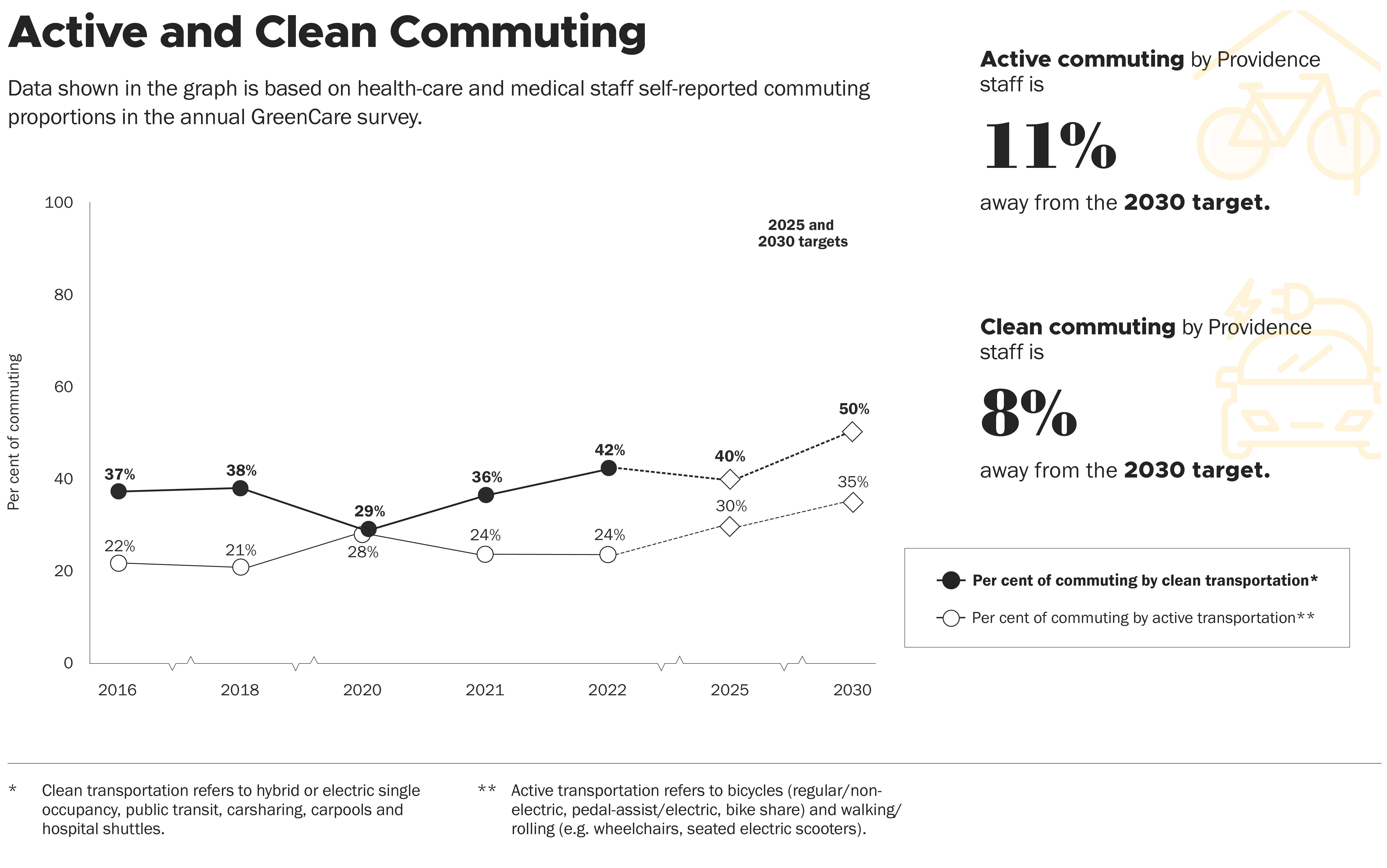
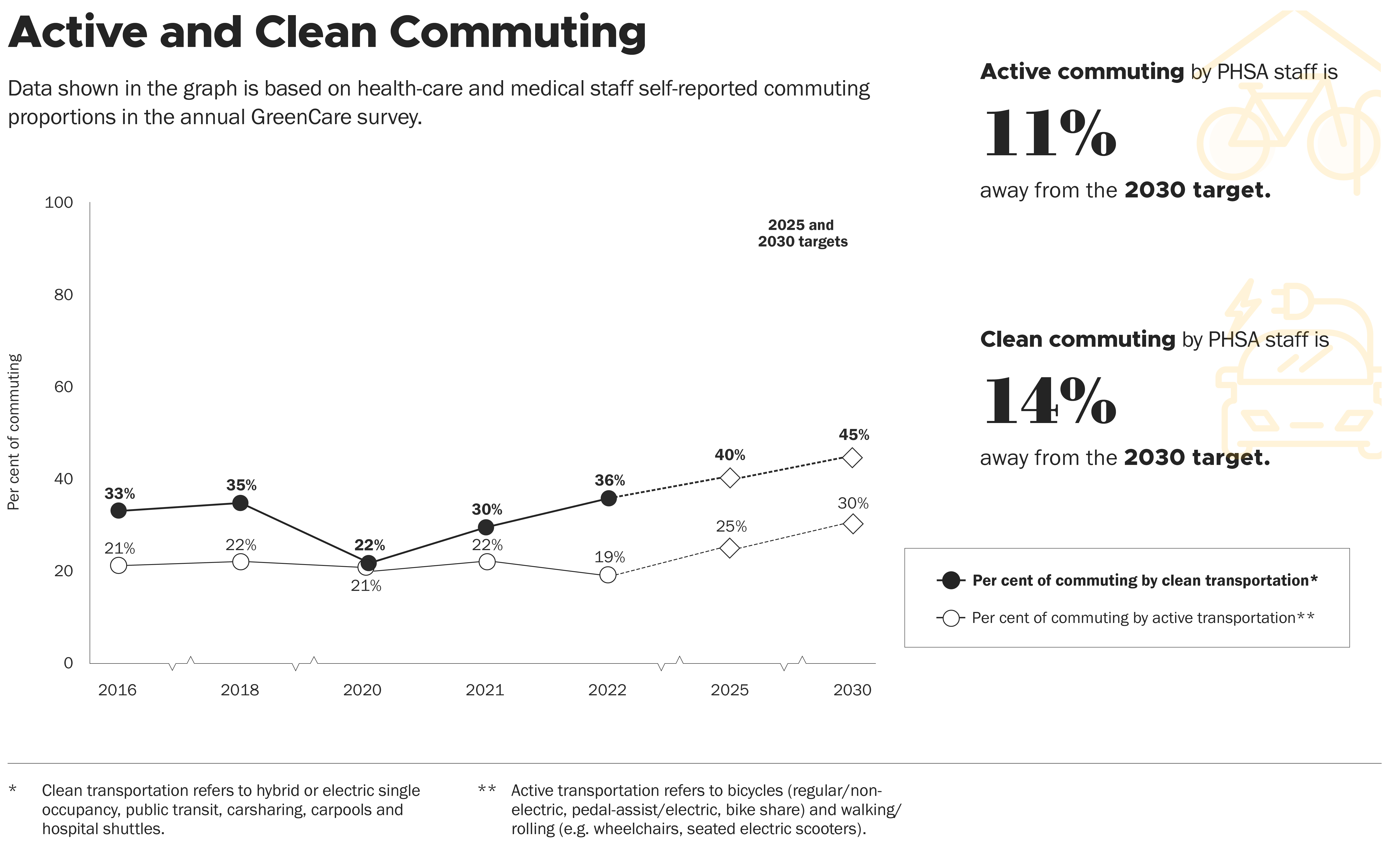
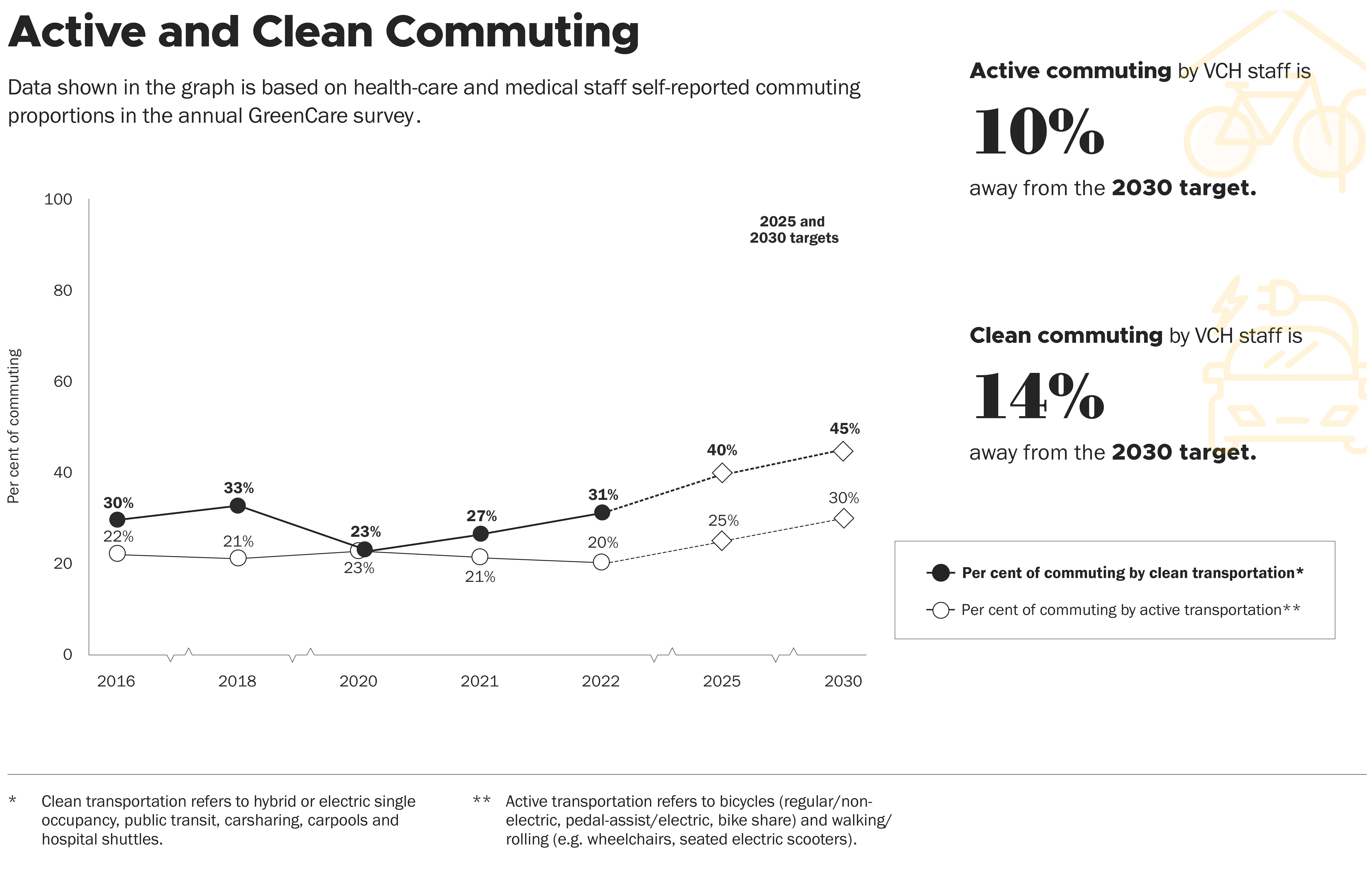
Want to see how we are doing?
Click here to read the latest Environmental Performance Accountability Report
Facilitation and support

Jen Chapman
Regional Sustainability ConsultantFeatured Story
Shuttling for Sustainability
Shuttle Coordinator Angelo Longo helps drive VCH towards a lighter carbon footprint!
Having worked with Vancouver Coastal Health’s (VCH) shuttle program for 26 years, Angelo Longo had been thinking about more sustainable transportation options for years. However, meeting Sustainability Consultant Emily Lomax encouraged Angelo to take a leading role. “It was eye-opening,” Angelo says of their conversation. Angelo realized hospitals had a responsibility to create lighter carbon footprints—and that he wanted to be part of this change.
